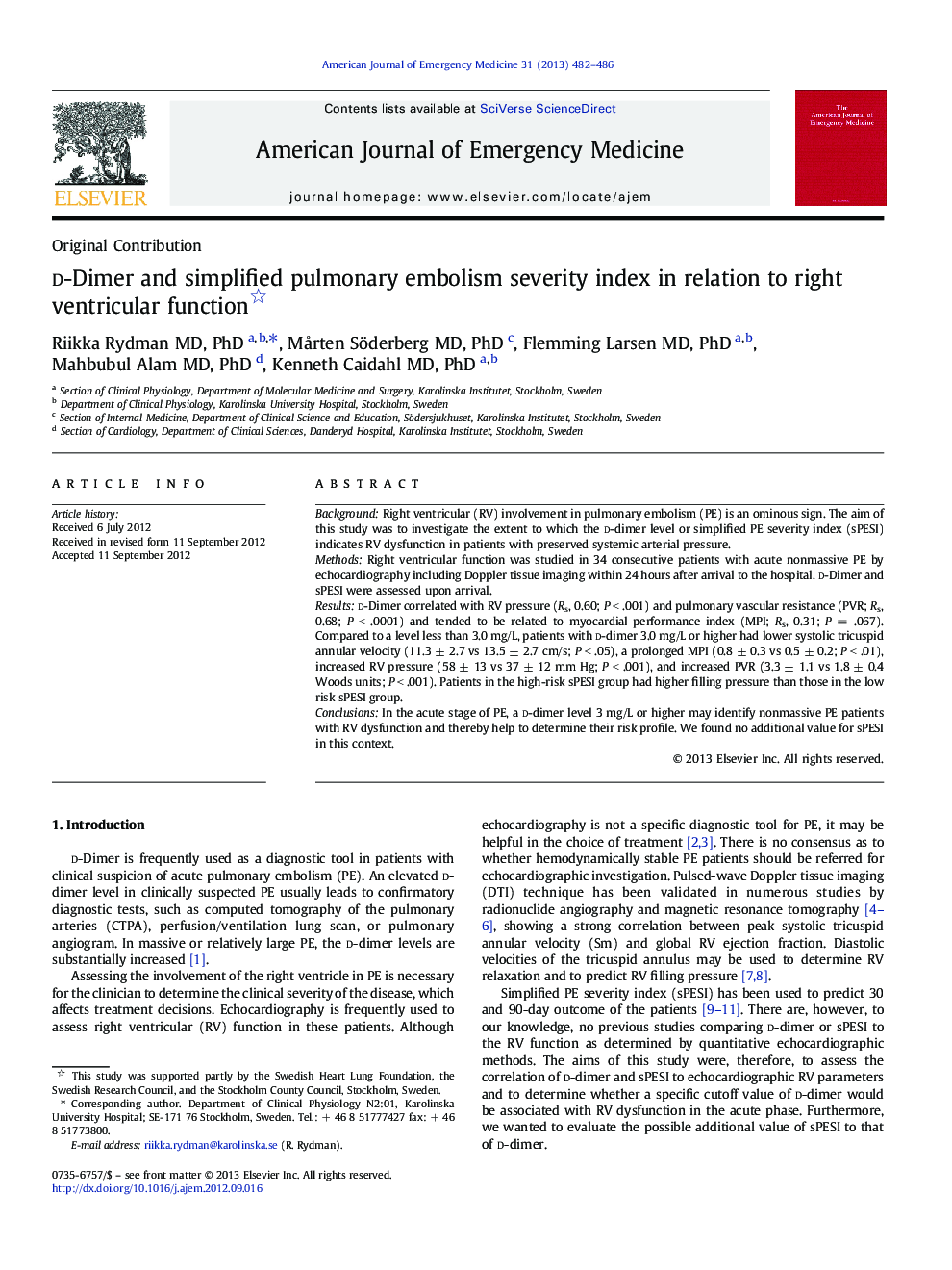| Article ID | Journal | Published Year | Pages | File Type |
|---|---|---|---|---|
| 3223816 | The American Journal of Emergency Medicine | 2013 | 5 Pages |
BackgroundRight ventricular (RV) involvement in pulmonary embolism (PE) is an ominous sign. The aim of this study was to investigate the extent to which the d-dimer level or simplified PE severity index (sPESI) indicates RV dysfunction in patients with preserved systemic arterial pressure.MethodsRight ventricular function was studied in 34 consecutive patients with acute nonmassive PE by echocardiography including Doppler tissue imaging within 24 hours after arrival to the hospital. d-Dimer and sPESI were assessed upon arrival.Resultsd-Dimer correlated with RV pressure (Rs, 0.60; P < .001) and pulmonary vascular resistance (PVR; Rs, 0.68; P < .0001) and tended to be related to myocardial performance index (MPI; Rs, 0.31; P = .067). Compared to a level less than 3.0 mg/L, patients with d-dimer 3.0 mg/L or higher had lower systolic tricuspid annular velocity (11.3 ± 2.7 vs 13.5 ± 2.7 cm/s; P < .05), a prolonged MPI (0.8 ± 0.3 vs 0.5 ± 0.2; P < .01), increased RV pressure (58 ± 13 vs 37 ± 12 mm Hg; P < .001), and increased PVR (3.3 ± 1.1 vs 1.8 ± 0.4 Woods units; P < .001). Patients in the high-risk sPESI group had higher filling pressure than those in the low risk sPESI group.ConclusionsIn the acute stage of PE, a d-dimer level 3 mg/L or higher may identify nonmassive PE patients with RV dysfunction and thereby help to determine their risk profile. We found no additional value for sPESI in this context.
